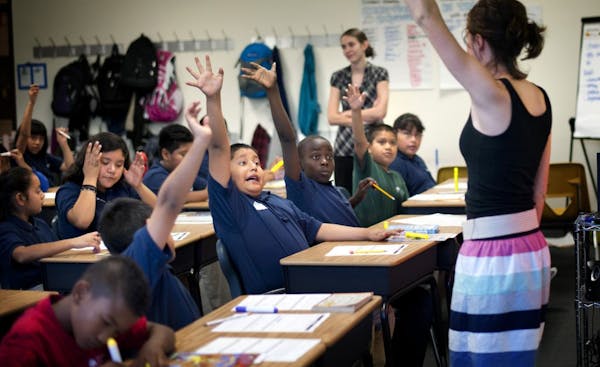Counterpoint
A compelling narrative is emerging in the Star Tribune editorial series "Growing Minneapolis" (Sept. 8, 15, 22). The third installment, on the racial disparities in Minneapolis and the need to close gaps, points to the many disparities in income, employment and education with which we have all become familiar.
So much has been made of these gaps, and of the pockets of success in charter schools like the Hiawatha Academies, that we start to wonder what's holding up the change.
The Editorial Board holds out more solutions — good ones, such as a focus on early childhood education, expanded youth employment opportunities, and job training programs that allow unemployed people of color to develop new skills.
But missing from the analysis is the "elephant in the room": racism.
Minnesota has some of the best overall statistics anywhere on employment, education outcomes and health. Yet we also have among the worst disparities. Are people of color in our state really less able than elsewhere? I don't think so.
What we have in Minnesota that must be confronted is a culture of racism that is embedded in our structures and institutions. It is, of course, embedded in everyday interactions between individuals as well. Along with — not instead of — employment, housing and education programs, there must be an acknowledgment of racism and a strategy for undoing its effect on our communities.
Job training will help. But if employers continue to overlook people with an unfamiliar name, an actual living-wage job will remain out of reach.
Education reform must include a look at the education institutions that are not working, not just the students who are not performing.
Housing opportunities will only become real if real-estate agents, lenders and rental agents do not practice discriminatory behavior.
In our land of Minnesota Nice, we have a fear of the "R" word. The racial-justice training that Organizing Apprenticeship Project offers to community organizers and leaders calls it out.
Rather than focus on a colorblind approach, which assumes the only racism is individual, interpersonal and intentional, the training highlights racial-justice strategies that recognize how racism is present in all aspects of our society, how it is embedded in institutions, and how it can often be an unintentional result of policies and practices.
Knowing the level of racism we are confronting allows for more targeted solutions and can help avoid the unintentional consequences of policies that appear colorblind.
My colleague Salvador Miranda puts it like this:
• Individual or internalized racism: Racism in personal attitudes, thoughts and internalized oppression (feeling inadequate because of your race). Solutions focus on changing individual attitudes through conversation and other educational opportunities.
• Interpersonal racism: Bigotry and bias between individuals. Solutions include diversity training, building cultural awareness, and developing relationships.
• Institutional racism: Racism within and between institutions resulting in discrimination and disparate outcomes. Solutions must focus on changes in policies and practices focused on equity, and a demand for accountability regarding disparities.
• Structural racism: Racism that permeates society through history, culture and systemic inequality. Solutions must expose historical roots and biases and lead to building a racial-justice movement.
Take schools as an example. Are students of color opting out of honors-level courses because they believe they can't succeed? Internalized racism.
Are teachers calling on the same students, who happen to be white, repeatedly, while ignoring the raised hand of a student of color? Interpersonal racism.
Do history courses and texts ignore the stories and contributions of immigrant communities of color, even as they highlight the stories of European immigrants? Institutional racism.
Do students of color who live in a particular low-income area of town also attend a school with fewer resources and opportunities for academic success? Structural racism.
The same analysis can apply to housing, criminal justice, employment, health care and other opportunities. We can find all of these levels of racism in Minneapolis.
Change that breaks down structures of racism and barriers to opportunities will be uncomfortable, partly because the usual way of doing things will be challenged. Building good programs that open up opportunities for communities of color is part of the solution.
But seeing the racism in the room and tackling it head-on must also be a part of a movement for racial justice.
------------------
Vina Kay is director of research and policy for Organizing Apprenticeship Project. A version of this article appeared on the blog opineseason.com.


